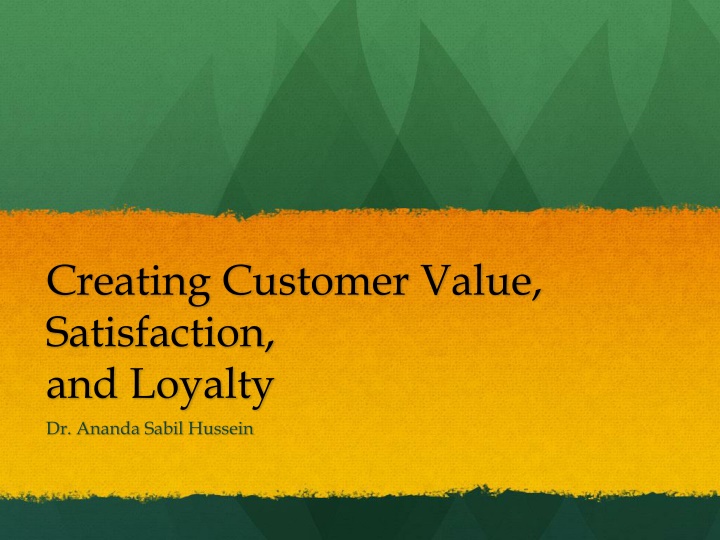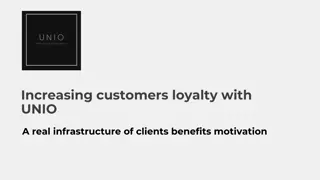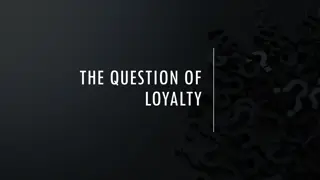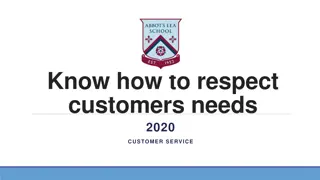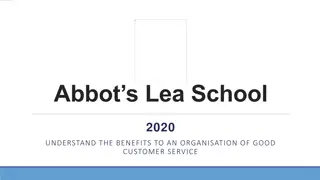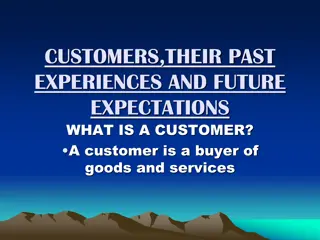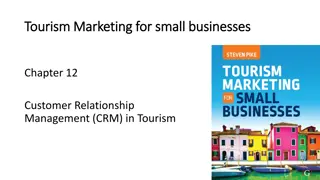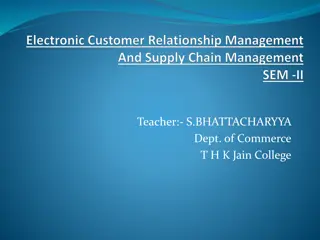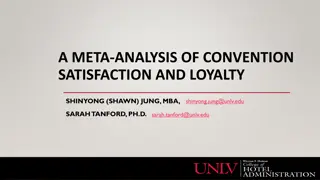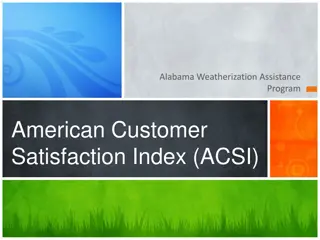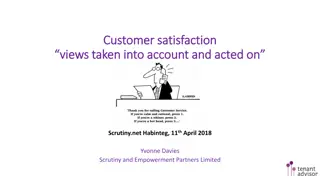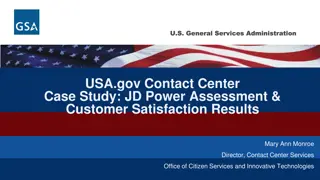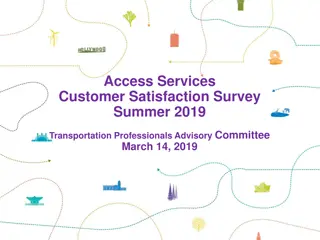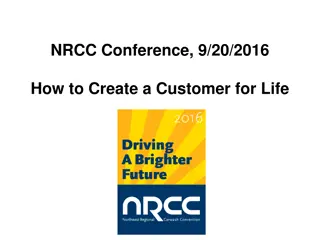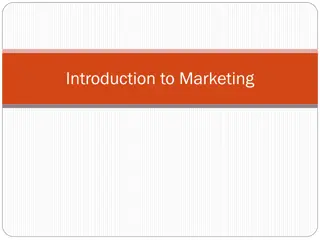Maximizing Customer Value, Satisfaction & Loyalty in Business
Explore the essence of customer value, satisfaction, and loyalty in business success through Dr. Ananda Sabil Hussein's insightful perspective. Learn about customer perceived value, determinants of value, steps in value analysis, loyalty definitions, satisfaction measurements, and the significance of quality in delivering exceptional customer experiences.
Download Presentation

Please find below an Image/Link to download the presentation.
The content on the website is provided AS IS for your information and personal use only. It may not be sold, licensed, or shared on other websites without obtaining consent from the author.If you encounter any issues during the download, it is possible that the publisher has removed the file from their server.
You are allowed to download the files provided on this website for personal or commercial use, subject to the condition that they are used lawfully. All files are the property of their respective owners.
The content on the website is provided AS IS for your information and personal use only. It may not be sold, licensed, or shared on other websites without obtaining consent from the author.
E N D
Presentation Transcript
Creating Customer Value, Satisfaction, and Loyalty Dr. Ananda Sabil Hussein
Chapter Questions What are customer value, satisfaction, and loyalty, and how can companies deliver them? What is the lifetime value of customers? How can companies cultivate strong customer relationships? How can companies both attract and retain customers? What is database marketing?
What is Customer Perceived Value? Customer perceived value is the difference between the prospective customer s evaluation of all the benefits and all the costs of an offering and the perceived alternatives.
Determinants of Customer Perceived Value Total customer benefit Total customer cost Product benefit Monetary cost Services benefit Time cost Personal benefit Energy cost Image benefit Psychological cost
Steps in a Customer Value Analysis Identify major attributes and benefits that customers value Assess the qualitative importance of different attributes and benefits Assess the company s and competitor s performances on the different customer values against rated importance Examine ratings of specific segments Monitor customer values over time
What is Loyalty? Loyalty is a deeply held commitment to re-buy or re-patronize a preferred product or service in the future despite situational influences and marketing efforts having the potential to cause switching behavior.
Measuring Satisfaction Periodic surveys Customer loss rate Mystery shoppers Monitor competitive performance
What is Quality? Quality is the totality of features andcharacteristics of a product or service that bear on its ability to satisfy stated or implied needs.
Maximizing Customer Lifetime Value Customer profitability Customer equity Lifetime value
What is Customer Relationship Management? CRM is the process of carefully managing detailed information about individual customers and all customer touchpoints to maximize customer loyalty.
Framework for CRM Identify prospects and customers Differentiate customers by needs and value to company Interact to improve knowledge Customize for each customer
CRM Strategies Reduce the rate of defection Increase longevity Enhance share of wallet Terminate low-profit customers Focus more effort on high-profit customers
Customer Retention Acquisition of customers can cost 5 times more than retaining current customers. The average customer loses 10% of its customers each year. A 5% reduction to the customer defection rate can increase profits by 25% to 85%. The customer profit rate increases over the life of a retained customer.
Steps for Creating Customer Evangelists Customer plus-delta Napsterize your knowledge Build the buzz Create community Make bite-size chunks Create a cause
Database Key Concepts Customer database Business database Database marketing Data warehouse Data mining Mailing list
Using the Database To identify prospects To target offers To deepen loyalty To reactivate customers To avoid mistakes
Perils of CRM Implementing CRM before creating a customer strategy Rolling out CRM before changing the organization to match Assuming more CRM technology is better Stalking, not wooing, customers
